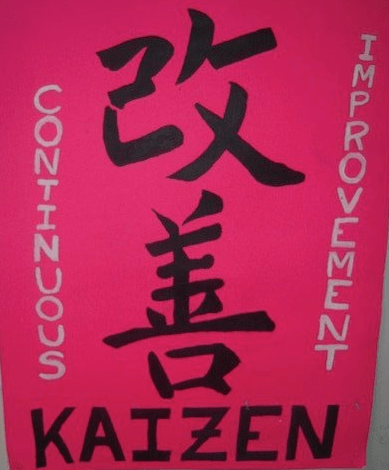
First, let’s face facts: the numerical prefixes currently in use, in English, are a horrible mess. Most of the ones used with polyhedra, for example, such as tetra- (4) and penta- (5), are derived from Greek. For polygons, however, a four-sided figure is usually called a quadrilateral, with “quad-” derived from Latin, just as it is in “quadrillion,” or “quadruplets.” Why use two prefixes for the number four? It would be more consistent (and therefore better), since four-faced polyhedra are called tetrahedra, for four-sided polygons to be called tetragons, just as we call five-sided polygons pentagons. Consistency improves comprehension, simply by reducing the number of prefixes one needs to understand, and can therefore aid in both teaching and learning. Inconsistency, though, has the opposite effect, and that benefits no one.
The Greek-based prefix for 5, “penta-,” has a Latin-based rival, also: “quint-,” as in quintuplets, or the number quintillion. It doesn’t make sense to use two different prefixes for the same thing, for both English, and mathematics, are complicated enough without adding unnecessary complications. The necessary complications are quite enough!
My preference is for Greek-based prefixes, for two reasons: (1) more of them are in use than their Latin counterparts, and (2) the Latin-speaking Romans appropriated ideas from the ancient Greeks, not the other way around.
Even the number one is not immune from this problem. For one, we use “mono-,” “uni-,” “un-,” “uni-,” “en-, “and “hen-,” all to mean “one,” and each has at least a slightly different derivation. Examples include “monomer,” “monologue,” “unicycle,” “undecillion,” “undecagon,” “endecagon,” and “hendecagon,” the last three of which all name the same polygon. (Also, these last three prefixes are for 11, actually, formed by combining a prefix for the one with the Greek-based “deca-” prefix for ten. Combinations of prefixes will be addressed later.) I call 11-sided polygons “hendecagons,” for both prefixes in that word are derived from Greek.
Prefixes for the number two are also unnecessarily numerous, as well as ambiguous. “Bi-” is used in “bicycle,” “binary,” and “billion,” but that’s a horrible idea, since “bi-” is also used, in some cases, for ½. This shows up, for example, in chemistry: the bulk of a carbonic acid molecule, if fully ionized, is called the carbonate ion. However, if it is only half-ionized, it is often called the bicarbonate ion, as in sodium bicarbonate, better-known as baking soda. In chemistry, “di-” is used for two, as in carbon dioxide, a molecule containing two oxygen atoms. “Do-” and “duo-” are also both used for the number two, with the first derived from Greek, and the second from Latin. When combined with the Greek prefix for ten, to make twelve, these prefixes appear in words such as “dodecagon,” “dodecahedron,” and “duodecimal.” I find the word “duodecimal” particular irritating, for it combines Greek and Latin prefixes in a single word. If one person had deliberately designed this entire system, with the goal of causing confusion, it would have taken a lot of work to invent a system more confusing than the one we actually use.
If, for ½, we only used “bi-,” that would be nice, but that isn’t what we do. Half a circle is a semicircle, and then half a sphere is a hemisphere. Since it originates from Greek, my preference is for “hemi-.”
At least three’s prefix is usually consistent, with “tri-” being all-but-universal. The only exception I know of appears when “tri-” is combined with “deca-,” to create a prefix for thirteen, and the Greek work for “and,” which is “kai,” often appears with it, as in triskaidecaphobia, the fear of the number thirteen — in this word, “tri-” is modified to “tris-.” However, a thirteen-sided polygon is simply called a “tridecagon,” with no “s” attached to “tri-,” and the “kai” omitted.
I don’t actually care if we use “kai,” or not, in numerical prefixes, but we should pick one or the other, and stick with it. It makes no sense that a fifteen-sided polygon is usually called a “pentadecagon,” while sometimes called a “pentakaidecagon.” Why do we not simply choose just one?
Six and seven are similarly troublesome. The numbers “sextillion” and “septillion,” as well as the month of September, all use Latin-derived prefixes for these numbers. I prefer the Greek-derived prefixes used with polygons and polyhedra: “hexa-,” and “hepta-.” With eight, though, as in the case of three, English-speakers lucked out, with “octopus,” “octillion,” “octagon,” and “octahedron” all starting with the same three letters.
With nine, however, our system falls apart again. In high school, geometry students are taught the Latin-prefix-containing word “nonagon” for a nine-sided polygon, and “November” contains yet another Latin-based prefix meaning nine. (It was named the ninth month, rather than the eleventh, because the start of each new year was marked with the first day of Spring in ancient times, rather than the first day of January.) A professional mathematician, however, is more likely to call a nonagon an “enneagon,” for “ennea-” is derived from Greek, making “enneagon” consistent with its “neighbors,” the octagon and the decagon. Ten is not a problem, though, for the Greek-based “deca-” was simply appropriated by the Latin-speaking Romans, who named their tenth month December — using a prefix close enough to “deca-” that it is unlikely to cause confusion.
One numbers exceed ten, though, a new problem is encountered, in addition to the issue of whether or not we use “kai.” Numbers such as 12 and 24 require us to combine prefixes, but there is no consistency in the order in which this is done. For example, a twelve-faced polyhedron is a “dodecahedron” — using a prefix for two, followed by a prefix for ten: the smaller number, and then the larger number. We continue this practice with words such as “pentadecagon,” already described above. Then, however, we have this thing, the dual of the snub cube:

The faces of this polyhedron are 24 pentagons, and it isn’t the only well-known polyhedron with 24 faces, so “pentagonal” is part of this polyhedron’s name, which makes sense. However, if its name followed the pattern in the paragraph above, that would make it a “pentagonal tetraicosahedron,” or perhaps a “pentagonal tetrakaiicosahedron” — the smaller “tetra-,” meaning “four,” would come before the larger “icosa,” meaning twenty. At least both these prefixes originated in the Greek language, but, for mysterious reasons, the prefixes are put in the reverse order, relative to the order used for the dodecahedron: it is called the “pentagonal icositetrahedron.” Polyhedral names are hard enough to learn without arbitrary switches between “smaller, then larger,” and its opposite, “larger, then smaller.” We should choose a method, one or the other, and then stick to it.
[Note: the rotating polyhedron above was created using Stella 4d, software you can buy, or try for free, at this website.]
In chemistry, naming-disputes (what to call a newly-synthesized element, for example) are settled by the IUPAC: the International Union of Pure and Applied Chemistry. I know of no organization with a corresponding role in the field of mathematics, but, if one were created, perhaps that would help get this mess cleaned up.










